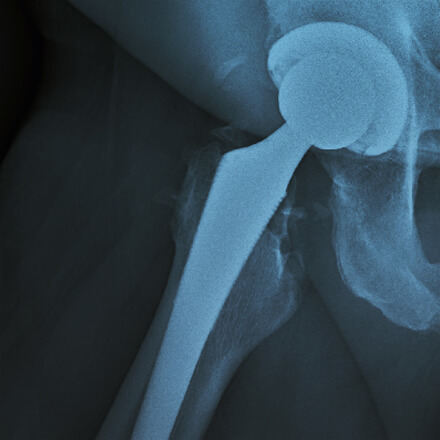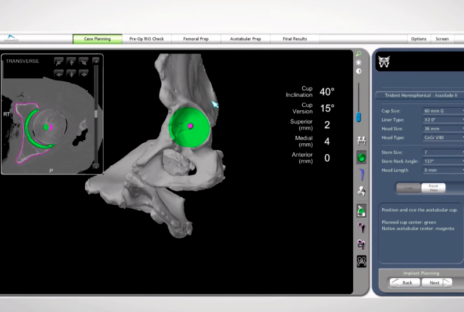Exceptional care from hip reconstruction specialists
Treatments for hip & thigh pain
The hip is one of the largest weight-bearing joints in the body, playing an essential role in mobility and balance. Florida Orthopaedic Institute’s hip specialists concentrate on restoring function as well as preventing and reducing hip pain.






Learn more about
Hip & thigh specialists at FOI






























Common hip & thigh conditions
From minimally invasive surgical techniques to total hip replacement, our team of board-certified surgeons diagnose and treat patients for the entire spectrum of hip and thigh conditions, including:
- Arthritis
- Avascular Necrosis (Osteonecrosis) of the Hip
- Chronic Joint Pain
- Groin Strains & Pulls
- Hamstring Injuries
- Hip Dislocation
- Hip Flexor Strains
- Hip Fractures
- Hip Impingement Labral Tears
- Hip Muscle Strains
- Hip Pointers & Trochanteric Bursitis
- Labral Tears of the Hip (Acetabular Labrum Tears)
- Osteoporosis
- Osteoarthritis of the Hip
- Pelvic Ring Fractures
- Piriformis Syndrome
- Thigh Fractures
- Thigh Muscle Strains
“The best part is getting my life back and being able to do the activities that I did before, and even some that I hadn’t thought of before. I didn’t realize that there are people that do what Florida Orthopaedic Institute does. They put me back together.” Kimberly | Femur Fracture
Hip pain treatments
The thigh and hip specialists at Florida Orthopaedic Institute are world-renowned for their personalized hip treatments, including the following conservative and surgical options:
Hip arthroscopy allows doctors to view the hip joint without making a large cut through the skin and other soft tissues. This surgical procedure is used to diagnose and treat a wide range of hip problems and the surrounding soft tissues. A small camera, called an arthroscope, is inserted into the hip joint, displaying images on a video monitor. Your surgeon uses these images to guide miniature surgical instruments. This minimally invasive approach results in less pain for patients, less joint stiffness, and often shortens the time it takes to recover and return to favorite activities.
Iliopsoas tenotomy is surgery on the iliopsoas tendon in the hip to reduce pain and improve range of motion. This procedure is used to treat snapping hip syndrome, also known as dancer’s hip. Snapping hip syndrome causes people to feel a snapping sensation when the hip is extended and flexed. This sensation can be accompanied by pain or discomfort that starts around the front of the hips and radiates down your thighs to the knees. Open surgery and endoscopic release (a minimally invasive approach) are the two types of surgical release of the iliopsoas tendon.
A total hip replacement (also called an arthroplasty) is a surgical procedure that removes and replaces damaged bone and cartilage with prosthetic components. Your surgeon may recommend hip arthroplasty if you have a painful condition that does not respond to nonsurgical treatment such as rest, physical therapy, and medications or injections that reduce inflammation.
Hip replacement surgeries are one of the most successful operations in all of medicine. First performed in the 1960s, improvements in surgical techniques and technology have greatly increased their effectiveness.
Total hip replacement with an anterior approach is a surgery done from the front of the hip. This minimally invasive procedure offers several advantages, including less damage to major muscles, less postoperative pain, faster recovery, and fewer post-surgical precautions. If you are considering hip replacement surgery, speak with a Florida Orthopaedic Institute surgeon about the potential advantages and disadvantages given your specific circumstances, such as the type of hip arthritis, anatomy, overall health and lifestyle.
Mako robotic-assisted surgery can be used to complete a total hip replacement in patients suffering from non-inflammatory or inflammatory degenerative joint disease of the hip. Mako technology provides surgeons with patient-specific 3-D models to pre-plan hip replacements. Using an individualized patient plan, surgeons guide the Mako robotic arm during surgery. Mako technology helps with the removal of diseased bone, preserving healthy bone, and assists the surgeon in positioning the total hip implant based on the patient’s anatomy.


